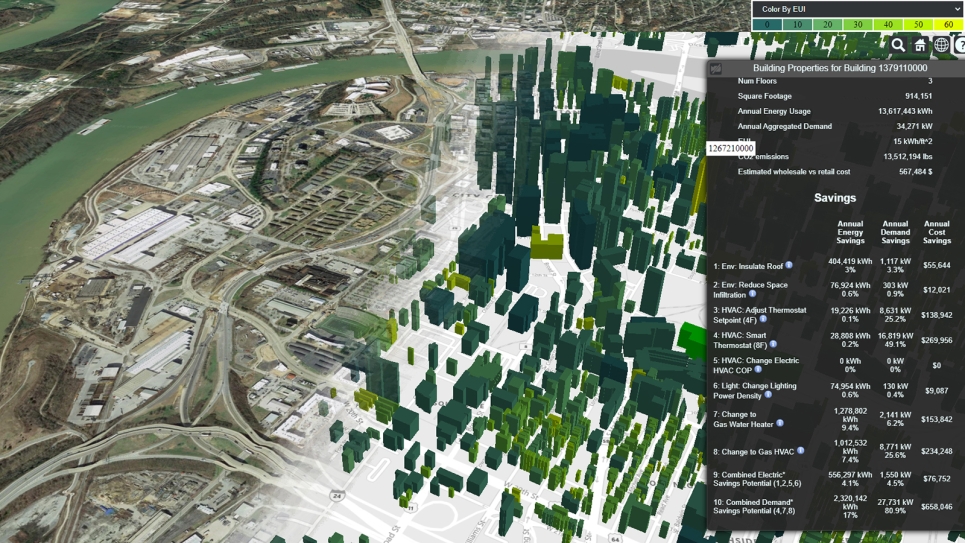
Automatic Building Energy Modeling (AutoBEM)
With this INCITE project, researchers will advance the Automatic Building Energy Modeling (AutoBEM) project to extend existing capabilities for creating and simulating a model of every building in America (bit.ly/ModelAmerica) to estimate energy, emissions, and cost reductions of energy-efficient building technologies.
There are more than 125 million residential and commercial buildings in the U.S. consuming approximately $395 billion per year in energy bills, 73% of the nation’s electricity (80% during peak generation), and 39% of the nation’s greenhouse gas emissions. Building energy modeling can help identify energy conversation measures, but this approach suffers from the high transaction costs needed to create, refine, understand, and effectively utilize the models. For example, significant amounts of manual labor are required to construct one-off building models by hand, often repeatedly for different uses by different stakeholders.
With this INCITE project, researchers will advance the Automatic Building Energy Modeling (AutoBEM) project to extend existing capabilities for creating and simulating a model of every building in America (bit.ly/ModelAmerica) to estimate energy, emissions, and cost reductions of energy-efficient building technologies. AutoBEM (bit.ly/AutoBEM) is a suite of software tools that incorporates several data retrieval and scalable processing algorithms for defining properties about each building in a geographical area and synthesizing an OpenStudio and EnergyPlus building energy model.
Building on the research carried out with a 2020-2021 award from DOE’s ASCR Leadership Computing Challenge, the AutoBEM team will continue to leverage DOE supercomputers to incorporate new data, methods, and stakeholder feedback to significantly improve crude, nation-scale building energy models toward investment-grade models. The researchers will also continue to work with stakeholders to make the resulting building energy models and analysis free and publicly available under a permissive license for use by any organization for any purpose. Ultimately, this project will deliver data products that aim to stimulate private sector activity towards more simulation-informed and grid-aware energy efficiency technologies necessary for a sustainable built environment.